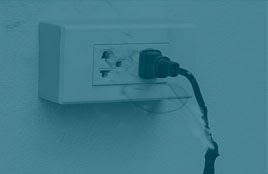What are “opioids”? Opioids is a more general term used to describe a variety of pain-relieving medications. You may recognize the names: morphine, codeine, hydromorphone, hydrocodone, oxycodone, and fentanyl, to name a few. These are some of the opioid medications you may receive for pain management in a hospital.
While opioid use is generally safe for most patients, opioid analgesics may be associated with adverse effects, the most serious effect being respiratory depression leading to injury, or even death. Other common adverse effects associated with opioid therapy include dizziness, nausea, vomiting, constipation, sedation, delirium, hallucinations, falls, hypotension, and aspiration pneumonia.
These may lead to what is called an “adverse event”—any unanticipated event in a healthcare setting that results in death or serious physical or psychological injury to a patient or patients which is not related to the natural course of the patient’s illness.
Adverse events can occur with the use of any opioid. In fact, opioid analgesics rank among the drugs most frequently associated with adverse drug events in a hospital.
Some of the causes for adverse events associated with opioid use are:
- Lack of knowledge about potency differences among opioids.
- Improper prescribing and administration of multiple opioids and modalities of opioid administration
- Inadequate monitoring of patients on opioids.
The importance of both assessing and managing pain is critical to patients who otherwise would suffer debilitating pain. Notwithstanding the need for appropriate pain management, hospitals should make staff aware of the following factors and activities that can help them avoid accidental opioid overuse and be on the lookout for patient who are at higher risk of an adverse event from opioid use:
Characteristics of patients who are at a higher risk for oversedation and respiratory depression can include:
- Sleep apnea or sleep disorder diagnosis
- Morbid obesity with a high risk of sleep apnea
- Snoring
- Older age; the risk is:
- 2.8 times higher for individuals aged 61-70
- 5.4 times higher for age 71-80
- 8.7 times higher for those over age 80
- No recent opioid use
- Post-surgery, particularly upper abdominal or thoracic surgery
- Increased opioid dose needs or opioid longterm use
- Longer length of time receiving general anesthesia during surgery
- Use of other sedating drugs, or other central nervous system depressants
- Preexisting pulmonary or cardiac disease, or dysfunction or major organ failure
- Thoracic or other surgical incisions that may impair breathing
- Smoking
Hospitals should take the following actions to help avoid adverse events associated with the use of opioids:
1. Carefully monitor patients receiving opioid therapy by performing frequent assessments of the quality and adequacy of respiration, as well as the depth of sedation.
2. Use available technology to monitor prescribing of opioids and to avoid errors.
- Build red flags or alerts into prescribing systems for all opioids.
- Separate sound-alike and look-alike opioids, to reduce the risk of error.
- Use systems to calculate correct doses of opioids
- Use patient-controlled analgesia (PCA) to reduce the risk of oversedation
3. Educate and assess the staff’s understanding of the potential effects of opioid therapy on sedation and respiratory depression. Staff training should emphasize how to assess patients for adverse drug reactions, how to recognize advancing sedation, and the importance of making timely adjustments to the plan of care based on the patient’s risk.
4. Educate and provide written instructions to patients who are on opioids (and to the patient’s family or caregiver) about the side effects of opioid medications, potential for interactions with other medications, the impact of opioid therapy on psychomotor and cognitive function (which may affect safety), and the potential risks of tolerance, addiction, physical dependency, and withdrawal.
5. Screen patients for risk factors associated with oversedation and respiratory depression.
Pain management in the hospital is an important part of the care provided by the doctors and staff. While no patient should suffer, doctors and staff must be vigilant about factors and activities that can help avoid accidental opioid overuse and be on the lookout for patients who are at a higher risk of an adverse event from opioid use.






